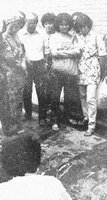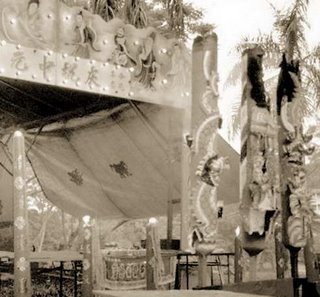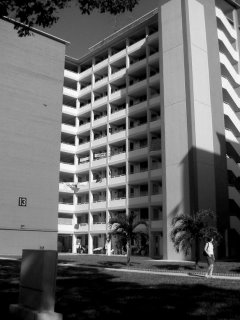Watching the medicine man or ‘koyok man’ selling his wares was pure entertainment. A frequent performance at the night bazaars was the vendor peddling his secret concoctions that would take away all the ills of life. The Hokkiens called it “buay kao yoke”, selling balm in Hokkien dialect.
One of my favourites was the 'koyok man' selling the medicated oil or ‘kun thao yu’ loosely translated as ‘fist oil’. A balm for bruises, knocks and falls. 'Kun thao yu' was a sort of mother of all medicated oils and each family would boasted of a preference for a particular brand.
The 'koyok man' show was predictable. I recalled clearly this medicine man that peddled his special oil for treating burns. He got his act ready by placing a tiny kerosene stove in the centre, and a small table displaying his fiery red oil in tiny little bottles. Behind the table stood an array of photographs parading his satisfied customers and well-known personalities lending credibility to his wares.
Crowd would gathered to sniff out what was happening and he would start to light up the stove and placed a long thick metal chain over the store. Turning up the heat, the metal chain started to glow as it absorbed all the heat. In the meantime, he did nothing except going round the stove creating an air of expectation. When the crowd was just right, he will extol on the merits of his special medicated oil. Boasting of his discipleship of a far away master in far away China and citing the many cures and miracles of his patients. And the who’s and who’s in his list of satisfied customers. This went on and on while he tried to sell his concotion. No one bought as most would had been memerised by his bragging and waiting to see what he was going to do with the fiery red hot chain.

This would drag on until very late. No one bought and no one budged. He was waiting for us and we, for him.
Just before closing time, if there was a period, he lifted up the chain and in full view of the audience; he slided one hand over the red-hot chain and shouted out in agony.
Careful to show his contorted face exaggrated with pain and he went over to the table and grabbed a bottle and apply the ointment over his hand while his face gleamed with gratification that he had found relieve.
Everyone would applaused and suddenly everyone started buying the ointment. It was amazing.
We laughed over it, as we couldn’t believe that people could fall for the trick. There was no miracle for burns, maybe a temporary relieve. We knew it, we saw him applied an ointment on his hands before he set up his store.
And there was this man who sold glass cutters. It was amazing. He slided the cutter along a piece of glass and with a gentle knock, the glass splited cleanly along the cut. Impressed, I bought one but it never worked.
I was convinced at a tender age not to trust street vendors. To me, it was all about showmanship and conditioned presentation.







